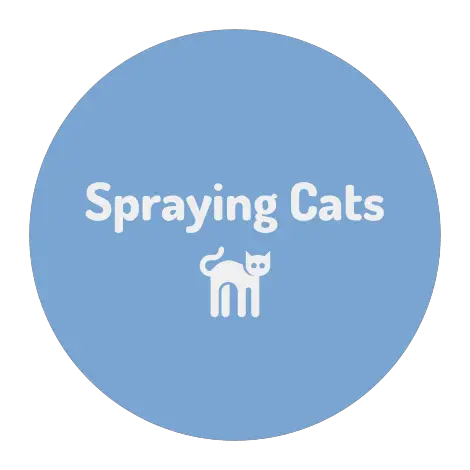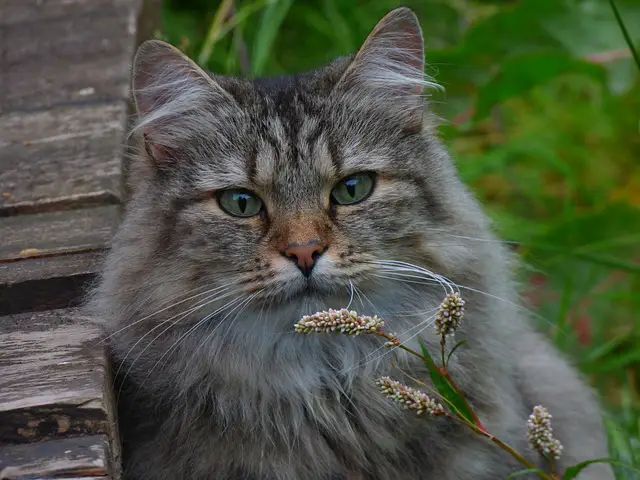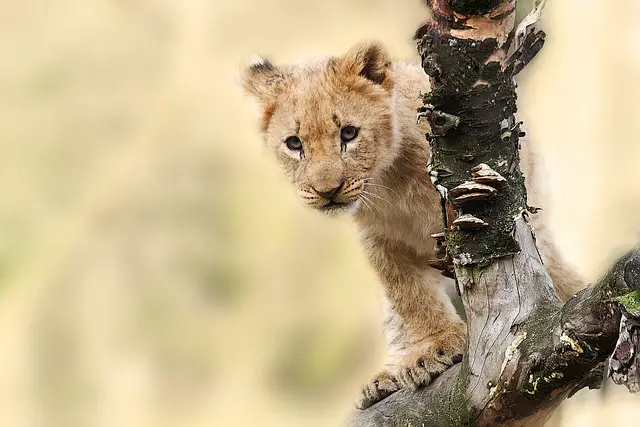The Norwegian Forest Cat is a domestic cat known for its long, thick fur and large size. These cats are highly sought after due to their majestic appearance and friendly personality.
However, many people are curious about the lifespan of this breed and how long they can expect their furry friend to live.
On average, a Norwegian Forest Cat can live anywhere from 12 to 16 years.
However, many factors can affect their lifespan, including genetics, diet, exercise, and overall health. Owners must provide their cats with proper care and regular veterinary checkups to ensure they live a long and healthy life.
If you’re considering adopting a Norwegian Forest Cat, it’s essential to understand the commitment involved in caring for this breed.
While they are generally healthy cats, they require daily grooming and plenty of exercise to keep them happy and healthy.
With proper care, a Norwegian Forest Cat can make an excellent addition to any family for many years.
Norwegian Forest Cat: An Overview
The Norwegian Forest Cat, also known as the Skogkatt, is a breed of domestic cat that originated in Norway. These cats have a distinctive long, thick coat that helps them survive in cold climates. They are also known for their large size and strong, athletic build.
Norwegian Forest Cats have been around for a long time, with some experts estimating that they have been in Norway for over 1,000 years. It is believed that they were initially brought to Norway by Vikings, who used them as mousers on their ships.
In terms of temperament, Norwegian Forest Cats are known for being friendly and affectionate. They are also very intelligent and curious, sometimes getting them into trouble. However, they can make great family pets with proper training and socialization.
Regarding lifespan, Norwegian Forest Cats are generally considered to be a long-lived breed. While there is no exact figure, many experts believe these cats can live up to 15 years or more with proper care and attention. Of course, like all cats, their lifespan can be affected by various factors, including genetics, diet, and lifestyle.
Overall, the Norwegian Forest Cat is a fascinating breed with a rich history and many admirable qualities. Whether you are looking for a companion for your family or want to learn more about these beautiful cats, there is no doubt that the Norwegian Forest Cat is a breed worth considering.
Life Expectancy of Norwegian Forest Cats
Norwegian Forest Cats are known for their long and healthy lives. On average, they live between 14-16 years, but some have been known to live up to 20 years or more.
The life expectancy of a Norwegian Forest Cat can vary depending on several factors, including genetics, diet, exercise, and overall health. Providing your cat with a healthy and balanced diet, regular exercise, and routine veterinary care is essential to ensure a long and happy life.
Genetics plays a significant role in determining the life expectancy of a Norwegian Forest Cat. Breeding practices can impact the cat’s health, and it is essential to choose a reputable breeder who prioritizes the health and well-being of their cats.
In addition to genetics, diet and exercise are essential for maintaining the health of a Norwegian Forest Cat. Providing your cat with a balanced diet with high-quality protein and essential nutrients can help prevent health problems. Regular exercise can also help maintain a healthy weight and prevent obesity-related health issues.
Norwegian Forest Cats have a relatively long life expectancy compared to other cat breeds. You can ensure that your furry friend lives a long and happy life by providing them with proper care, attention, and love.
Factors Influencing Lifespan
Various factors influence the lifespan of a Norwegian Forest Cat. Here are some of the most important ones:
Genetics
Genetics plays a crucial role in determining the lifespan of a Norwegian Forest Cat. Some cats may be predisposed to certain health conditions that can shorten their lifespan. For example, some Norwegian Forest Cats may be prone to developing heart disease or kidney disease, which can significantly impact their lifespan.
Diet
Diet is another crucial factor that can influence the lifespan of a Norwegian Forest Cat. A well-balanced diet rich in nutrients can help keep the cat healthy and reduce the risk of developing health problems. On the other hand, a poor diet can lead to obesity, increasing the risk of various health issues.
Lifestyle
The lifestyle of a Norwegian Forest Cat can also impact its lifespan. Cats kept indoors and with limited physical activity may be more prone to obesity and other health problems. On the other hand, cats with access to the outdoors and can engage in physical activity may be healthier and live longer.
Veterinary Care
Regular veterinary care is essential for maintaining the health of a Norwegian Forest Cat. Routine checkups can help detect health issues early on, improving the chances of successful treatment. Additionally, preventative measures such as vaccinations and parasite control can help reduce the risk of developing health problems.
Environmental Factors
Environmental factors such as pollution, exposure to toxins, and extreme weather conditions can also impact the lifespan of a Norwegian Forest Cat. Cats exposed to these types of factors may be more prone to developing health problems and may have a shorter lifespan.
In summary, a Norwegian Forest Cat’s lifespan is influenced by various factors, including genetics, diet, lifestyle, veterinary care, and environmental factors. By taking steps to maintain the cat’s health and well-being, owners can help ensure their cat lives long and healthy.
Genetic Factors
Norwegian Forest Cats have a relatively long lifespan compared to other cat breeds. However, their lifespan can be affected by various factors, including genetics. Here are some genetic factors that can influence the lifespan of Norwegian Forest Cats:
- Inbreeding: Inbreeding is common in cat breeding to maintain certain physical traits. However, it can also lead to genetic defects that can affect the health and lifespan of the cat. Norwegian Forest Cats bred from closely related parents may have a higher risk of congenital disabilities and a shorter lifespan.
- Genetic diseases: Some genetic diseases can affect the lifespan of Norwegian Forest Cats. For example, hypertrophic cardiomyopathy (HCM) is a heart disease common in cats, including Norwegian Forest Cats. This disease can be inherited, leading to heart failure and premature death.
- Genetic predisposition to diseases: Some Norwegian Forest Cats may have a genetic predisposition to certain diseases, affecting their lifespan. For example, some Norwegian Forest Cats may be more prone to developing kidney disease or cancer.
- Genetic diversity: Genetic diversity is essential for the health and longevity of a species. Norwegian Forest Cats with diverse genetic backgrounds may have a better chance of living a longer and healthier life.
Overall, genetics can play a significant role in the lifespan of Norwegian Forest Cats. Breeders should prioritize genetic diversity and avoid inbreeding to reduce the risk of congenital disabilities and diseases that can affect the health and lifespan of cats.
Environmental Factors
The environment in which a Norwegian Forest Cat lives can significantly impact its lifespan. Here are some factors that can affect the lifespan of a Norwegian Forest Cat:
Indoor vs. Outdoor Living
Norwegian Forest Cats that live indoors tend to live longer than outdoors. This is because indoor cats are protected from the dangers of the outside world, such as cars, predators, and diseases.
Outdoor cats are also more likely to fight with other cats, which can cause injuries and infections that can shorten their lifespan.
Diet
A cat’s diet can also affect its lifespan. Norwegian Forest Cats should be fed a high-quality diet appropriate for their age and activity level.
A diet that is too high in fat or calories can lead to obesity, shortening a cat’s lifespan. On the other hand, a diet deficient in essential nutrients can lead to health problems and shorten a cat’s lifespan.
Exercise
Exercise is essential for the health and longevity of all cats, including Norwegian Forest Cats. Cats that are overweight or obese are at a higher risk of developing health problems that can shorten their lifespan. Regular exercise can help keep a cat at a healthy weight and reduce the risk of health problems.
Stress
Stress can also hurt a cat’s lifespan. Norwegian Forest Cats exposed to chronic stress, such as from living in a noisy or crowded household, may be at a higher risk of developing health problems that can shorten their lifespan. It is essential to provide a calm and stress-free environment for your cat to help ensure a long and healthy life.
Dietary Factors
The Norwegian Forest Cat has a robust and healthy appetite, which is essential in determining its lifespan. A well-balanced diet is crucial to ensure your cat receives the nutrients necessary to thrive.
A diet high in protein, low in carbohydrates, and rich in moisture content is ideal for the Norwegian Forest Cat. High-quality protein sources such as chicken, fish, and beef are recommended. It is important to avoid feeding your cat with food that contains fillers or artificial preservatives.
Water is essential for the Norwegian Forest Cat’s health and longevity. A diet rich in moisture content can help prevent urinary tract infections and other health issues. Wet food is an excellent source of hydration, and it is recommended to feed your cat with wet food at least once a day.
Monitoring your cat’s weight and adjusting its diet is also essential. Obesity is a common health issue in cats, leading to various health problems such as diabetes and heart disease. Feeding your cat with small, frequent meals throughout the day can help prevent overeating and maintain a healthy weight.
In summary, a well-balanced diet rich in protein, low in carbohydrates, and high in moisture content is essential for the Norwegian Forest Cat’s health and longevity. Feeding your cat high-quality protein sources, wet food and monitoring its weight can help prevent health issues and ensure a long and healthy life.
Healthcare and Regular Checkups
Norwegian Forest Cats are generally healthy cats with a long life expectancy. However, as with all cats, they require regular veterinary checkups to maintain their health and well-being. Regular checkups can help detect any health issues early on and prevent them from becoming more serious.
Taking your Norwegian Forest Cat to the vet at least once a year for a general checkup is recommended. During the checkup, the vet will examine your cat’s eyes, ears, mouth, teeth, skin, and coat and listen to their heart and lungs. Depending on your cat’s age and health history, they may also recommend additional tests, such as blood work or X-rays.
In addition to regular checkups, keeping up with your Norwegian Forest Cat’s vaccinations is essential. Kittens should receive vaccinations starting at 8 weeks old, with boosters given annually or every three years depending on the vaccine. Vaccinations can help protect your cat from common diseases such as feline leukemia, rabies, and distemper.
Another important aspect of healthcare for Norwegian Forest Cats is dental care. Regular teeth cleaning can help prevent dental disease, leading to serious health issues such as heart disease and kidney failure. It is recommended to brush your cat’s teeth daily or at least a few times a week and to have their teeth professionally cleaned by a veterinarian as needed.
With proper care and regular checkups, Norwegian Forest Cats can live long, healthy lives.
Common Health Issues in Norwegian Forest Cats
Norwegian Forest Cats are generally healthy and hardy cats, but like all breeds, they are predisposed to specific health issues that owners should be aware of. Here are some of the most common health issues in Norwegian Forest Cats:
Hip Dysplasia
Hip dysplasia is a genetic condition that affects the hip joint and can cause pain, lameness, and arthritis. Norwegian Forest Cats are prone to hip dysplasia, so a veterinarian must evaluate their hips before breeding or adopting.
Hypertrophic Cardiomyopathy
Hypertrophic cardiomyopathy is a common heart disease in cats that causes the heart’s walls to thicken, making it harder for the heart to pump blood. Norwegian Forest Cats are one of the breeds predisposed to this condition, so a veterinarian must check their hearts regularly.
Polycystic Kidney Disease
Polycystic kidney disease is an inherited condition that causes cysts to form in the kidneys, eventually leading to kidney failure. Norwegian Forest Cats are one of the breeds predisposed to this condition, so a veterinarian must check their kidneys regularly.
Dental Issues
Norwegian Forest Cats are prone to dental issues such as periodontal disease and gingivitis. Regular dental checkups and cleanings can help prevent these issues and keep your cat’s teeth healthy.
Obesity
Norwegian Forest Cats are prone to obesity, leading to various health issues such as diabetes, arthritis, and heart disease. It’s essential to monitor your cat’s weight and provide them with a healthy diet and plenty of exercise to prevent obesity.
Overall, Norwegian Forest Cats are a healthy breed, but it’s essential to be aware of the potential health issues that they may face. Regular checkups with a veterinarian can help catch any issues early and ensure that your cat stays healthy and happy.
Preventive Measures for Longevity
Norwegian Forest Cats are generally healthy and robust, but like all living beings, they can develop health problems that shorten their lifespan. To ensure that your Norwegian Forest Cat lives a long and healthy life, there are some preventive measures that you can take.
One of the most important things you can do is to provide your cat with a healthy diet. Norwegian Forest Cats are prone to obesity, leading to various health problems, including diabetes, joint problems, and heart disease. Feeding your cat a high-quality, balanced diet appropriate for their age and activity level can help prevent obesity and keep them healthy.
Regular exercise is also essential for preventing obesity and keeping your cat healthy. Norwegian Forest Cats are active and playful, enjoying climbing, jumping, and exploring. Providing your cat with toys, scratching posts, and other forms of stimulation can help keep them active and engaged.
Regular veterinary care is essential for maintaining your cat’s health and detecting potential health problems early. Norwegian Forest Cats are prone to certain health problems, such as hip dysplasia and heart disease, and regular checkups can help ensure that these problems are detected and treated early.
In addition to providing your cat with a healthy diet, regular exercise, and veterinary care, there are other preventive measures you can take to help ensure that your Norwegian Forest Cat lives a long and healthy life. These include:
- Keep your cat indoors to protect them from predators, traffic, and other hazards.
- You provide your cat with a comfortable and safe environment free from stress and anxiety.
- They regularly groom your cat to keep their coat healthy and free from mats and tangles.
- Always provide your cat with fresh water to prevent dehydration and kidney problems.
- Keep your cat’s litter box clean to prevent urinary tract infections and other health problems.
By taking these preventive measures, you can help ensure that your Norwegian Forest Cat lives a long and healthy.
Conclusion
In conclusion, the Norwegian Forest Cat is a long-lived breed with an average 14-16 years lifespan. However, with proper care and attention, some individuals have been known to live into their early 20s.
It is important to note that genetics, diet, and lifestyle all play a role in determining the lifespan of a Norwegian Forest Cat. Regular veterinary checkups and preventative care can help ensure your furry companion’s long and healthy life.
Overall, the Norwegian Forest Cat is a hardy and resilient breed that can provide their owners years of love and companionship. They can live a long and happy life with proper care and attention.
[su_box title=”Affiliate Disclosure”]This website is supported by its readers. Please assume that all links are affiliate links. If you make a purchase from one of the links we will make a commission from Amazon. Thank you.[/su_box]




